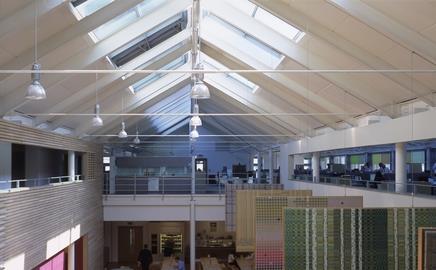Here's some handy tips on how to justify, plan and carry out a POE, based on a new guide released by the British Council for Offices
Overview
- Be prepared to justify the costs of a POE
- Staff questionnaires
- Engage positively with people to get ‘real’ results
- Make sure the client keeps their side of the bargain
- Store and reuse data from past POEs
Post occupancy evaluation (POE) is very much in vogue now. In these times of low company loyalty and high staff turnover, the forward thinking company knows it has to ensure its employees are happy with all aspects of their workplace – from the office temperature and noise levels to IT equipment, meeting spaces, lunch areas, even the quality of the coffee in the vending machine. But how do you go about finding out?
You ask them, of course! “This may seem like you are opening a can of worms,” says Nigel Oseland, author of the British Council for Offices new Guide to Post Occupancy Evaluation. “But employers and developers are now learning that POE is an invaluable tool for both existing organisations and learning how to build better in the future.”
Reaping long-term rewards
However, there are good and bad ways of going about it. Initially, be prepared to justify the costs of a POE. The client might baulk when you put in your quote but they have to realise that this initial outlay will bring long term benefit and raised revenue: even if that means you moving the boss out of his private office and giving the staff break-out areas and a pool table!Use the tools that will give the best feedback for each situation. Staff questionnaires are a mainstay but focus groups or workshops can dig deeper, while energy audits will pinpoint technologies and practices where savings can be made. “POE is a wonderful way of connecting designers with the people who work in their spaces. And, it works both ways,” says Sharon Turner, principal – workplace, at Swanke Hayden Connell Architects. “Some architects see people in their buildings as a nuisance, messing up the clean lines, so it’s good for them, too.”
Engage positively with people to get ‘real’ results. It is no use sending questionnaires or holding focus groups if staff and executives don’t fully understand the reasons for and potential benefits of the POE.
Make sure that the client keeps their side of the bargain. Great you’ve got the client to agree to a paperless office and extensive energy saving measures. However, if the staff aren’t ‘re-educated’, they will carry on printing out every document and leaving the lights and computers on all night.
Domino effect
“POE is beginning to really take off. Lots of organisations, both private and public, are asking for it but clients have to properly take on board POE recommendations in order to create the best working environments,” says Joanne Eley of Alexi Marmot Associates.Finally, store and reuse data from past POEs. Don’t reinvent the wheel every time you do a POE. Many clients are very similar so historic data can be utilised to save you time and them money.
Do all this and you can’t go wrong. “A good POE can improve every aspect of a company,” says Oseland, “from the environment to staff efficiency and overall the effectiveness and hard economics of the company.”

























No comments yet